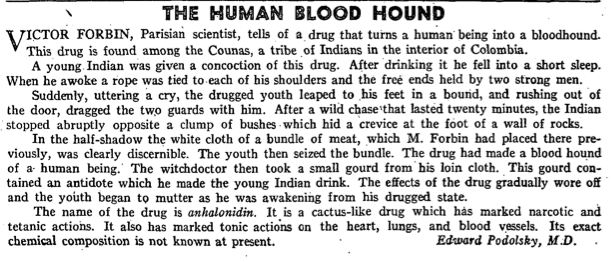Experiments
Rubber Chicken At The Edge of Space
Sent there recently by California high school students to measure the radiation from a solar storm. Details here. I wish my high school science projects had been that cool. Instead, they were all intensely boring. The only one I even remember was a water electrolysis experiment that I had to work on for weeks, and which involved the edge-of-your-seat thrill of watching a battery split water into hydrogen and oxygen.
Posted By: Alex - Fri Apr 20, 2012 -
Comments (6)
Category: Science, Experiments
Interior Clouds
Dutch artist Berndnaut Smilde creates temporary clouds inside rooms by regulating the temperature and humidity inside the rooms.
When I saw this it immediately reminded me of an experiment conducted in the eighteenth century by the Dutch scientist Martin van Marum. He created two artificial clouds by filling calf's bladders with hydrogen, causing them to float around his laboratory. He gave one of these bladder-clouds a positive charge, and another a negative charge. As these charged clouds floated around, sparks would pass between them. This was Van Marum's way of simulating a lightning storm.
But van Marum had an extra trick that was always a great crowd pleaser. He introduced a third (non-charged) cloud into the room. When this non-charged cloud passed between the two charged ones as they were exchanging sparks, it would noisily explode into flames (kinda like a miniature Hindenburg). That's how to do an interior cloud installation properly!
Posted By: Alex - Tue Mar 13, 2012 -
Comments (11)
Category: Art, Science, Experiments
Drug Turns Man Into Human Blood Hound
I came across this brief article in a back issue of Fantastic Adventures magazine (August, 1940).
The source isn't the most credible. (I don't think Fantastic Adventures peer-reviewed its articles.) But the story made me curious enough to do a google search to try to figure out where this drug 'anhalonidin' came from. A lot of the search results discuss it in connection with the cactus lophophora, from which comes the drug peyote. That kinda makes sense, I guess. Though I'm not sure if lophophora grows all the way down in Colombia.
Posted By: Alex - Sat Mar 10, 2012 -
Comments (5)
Category: Drugs, Psychedelic, Experiments, Blood
Johnson Smith Catalog Item #18

"Junior, why is the cat glowing?"
From the 1950 catalog.
Posted By: Paul - Mon Jan 30, 2012 -
Comments (4)
Category: Hobbies and DIY, Johnson Smith Catalog, Science, Experiments, 1950s
Solar Death Ray
Now that is a science project!
Read more here.
Posted By: Paul - Mon Jan 31, 2011 -
Comments (4)
Category: Death, Destruction, Education, Hobbies and DIY, Science, Experiments, Technology, Teenagers
Nick the Neurotic Dog
 You've probably heard of the Russian researcher Ivan Pavlov who conditioned dogs to salivate whenever they heard the ringing of a bell. Less well known, but more appropriate for Weird Universe, are the experiments of Pavlov's American student W. Horsley Gantt, who was a researcher at Johns Hopkins. Instead of making dogs salivate, Gantt had a dog named Nick who became conditioned to develop an erection whenever he heard a tone. Mandy Merck briefly describes the experiments with Nick in her book In Your Face: 9 Sexual Studies:
You've probably heard of the Russian researcher Ivan Pavlov who conditioned dogs to salivate whenever they heard the ringing of a bell. Less well known, but more appropriate for Weird Universe, are the experiments of Pavlov's American student W. Horsley Gantt, who was a researcher at Johns Hopkins. Instead of making dogs salivate, Gantt had a dog named Nick who became conditioned to develop an erection whenever he heard a tone. Mandy Merck briefly describes the experiments with Nick in her book In Your Face: 9 Sexual Studies:Shown is a picture of poor Nick demonstrating his unusual talent.
Posted By: Alex - Mon Nov 22, 2010 -
Comments (9)
Category: Animals, Science, Experiments, Sexuality
The Return of Doctor X
Humphrey Bogart regarded this as his biggest dog of a film. He plays a mad scientist who went to the electric chair, died, was revived with "synthetic blood," then had to subsist by draining the blood of others.
And here's the weirdest thing: almost every scene in this trailer is an outtake, not seen in the actual film! I wonder if viewers of the era felt ripped off.
'Nuff said!
Posted By: Paul - Fri Aug 27, 2010 -
Comments (3)
Category: Body Modifications, Horror, Medicine, Movies, Science, Experiments, 1930s, Blood
No Food, No Water Equals Mars
So follow the logic. Watch the clip until the end and you will learn the reason India wants to study this man is so they can send people to Mars without food and water.What am I missing here?
Posted By: gdanea - Fri May 28, 2010 -
Comments (5)
Category: Experiments
Chinese Farmer’s Robots at Expo
What to do when there is no crop to harvest? Build robots to pull your rickshaw. Wu YuLu (he even has the right first name!!) is displaying his robots at the World Expo.I like the mechanical cat who wakes the dog!!
Posted By: gdanea - Sat May 22, 2010 -
Comments (5)
Category: Experiments
Weird Science - Towel Folding Robot
Judging by the huge response to what I thought was a fairly large and obscure post about a tiny coincidence, the Hitchhiker's Guide and cutting-edge science is obviously a winning combination.So here is a super special Douglas Adams bonus, a robot folding towels! Okay so that's a bit of a stretch, but it is still quite cool.
Note that this video has been speeded up 50x, in real time it took the robot over an hour and a half to complete this one task. Perhaps it was feeling a little depressed?
Posted By: Dumbfounded - Sat Apr 17, 2010 -
Comments (25)
Category: Boredom, Futurism, Inventions, Robots, Science, Experiments, Technology

| Who We Are |
|---|
| Alex Boese Alex is the creator and curator of the Museum of Hoaxes. He's also the author of various weird, non-fiction, science-themed books such as Elephants on Acid and Psychedelic Apes. Paul Di Filippo Paul has been paid to put weird ideas into fictional form for over thirty years, in his career as a noted science fiction writer. He has recently begun blogging on many curious topics with three fellow writers at The Inferior 4+1. Contact Us |




